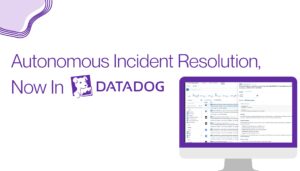Enhancing Contextual Intelligence in AI Agents with MCP
In my previous article, I explored the delicate balance between speed, quality, and cost in AI agent design. Today, I want to dive deeper into how we’re enhancing our agentic AI SRE, Hawkeye, through the Model Context Protocol (MCP) – and why it’s a cornerstone for scalable, intelligent agentic workflows in enterprise environments.
The Enterprise Telemetry Challenge
As my co-founder Gou Rao recently noted, “In the world of Site Reliability Engineering (SRE) and IT operations, problems rarely come with clean, structured answers.” Enterprise IT teams have access to a wide range of telemetry through observability platforms, incident management tools, and internal dashboards. And in some cases, SREs still end up manually combing through logs to piece the puzzle together.
But the core challenge isn’t just access to data – It’s connecting relevant context in a way that makes the data actionable. A CPU spike means little without the surrounding environment: recent deployments, config changes, or past anomalies.
Why Contextual Knowledge Is Essential
For an AI Agent to act autonomously—like a seasoned SRE—it must reason through complexity, not just surface patterns. That means asking follow-up questions, testing hypotheses, and adapting based on what it finds. This type of reasoning demands more than data ingestion. It requires contextual bridges—connections across systems that provide a unified operational understanding.
Enter the Model Context Protocol (MCP)
MCP connects AI agents to enterprise systems in a structured, dynamic way. MCP enables Hawkeye to navigate environments intelligently—pulling only what’s relevant, when it matters.
When an SRE asks, “Why are users experiencing delays when trying to log in — is the authentication service slower than usual?”, Hawkeye draws information from its existing connections to your tech stack, as well as from your MCP resources and tools:
- CI/CD pipelines to retrieve deployment history
- Source control systems like Git to track and identify changes.
- Docs, architectural diagrams, runbooks, and other sources of tribal knowledge
- Historical incidents that match current patterns
These connections span monitoring tools, code repositories, ticketing platforms, and internal wikis—creating contextual bridges that break down silos. Hawkeye synthesizes inputs from each source to build a coherent, real-time understanding of the issue.
From there, it activates its dynamic runbooks—or Hawkeye’s “chain of thought”—to move from symptom to root cause to remediation. This isn’t just access to data. It’s contextual reasoning in motion.

Practical Implementation
We’ve designed Hawkeye’s MCP integration with real-world production environments in mind:
- Runtime flexibility: New connections can be added dynamically
- Security-aware design: Scoped permissions protect boundaries
- Cross-system correlation: Structured context allows pattern recognition across tools
Together, these capabilities support iterative, self-reflective reasoning—enabling Hawkeye to pursue hypotheses, revisit assumptions, and adapt its course like a human SRE would.
The Road Ahead for Agentic Systems
As enterprise environments grow more complex, the contextual awareness that MCP enables won’t just be useful—it will be essential. With rich environmental intelligence at the core, we’re advancing toward more autonomous and effective problem-solving.
This shift redefines what agents can do—elevating them from narrow, task-based tools to systems that reason across silos and act with precision.
At NeuBird, our mission is to build agents that think and adapt like real engineers. With context as their compass, we’re bringing that vision to life—and redefining what agentic AI can deliver for enterprise IT.
Written by







